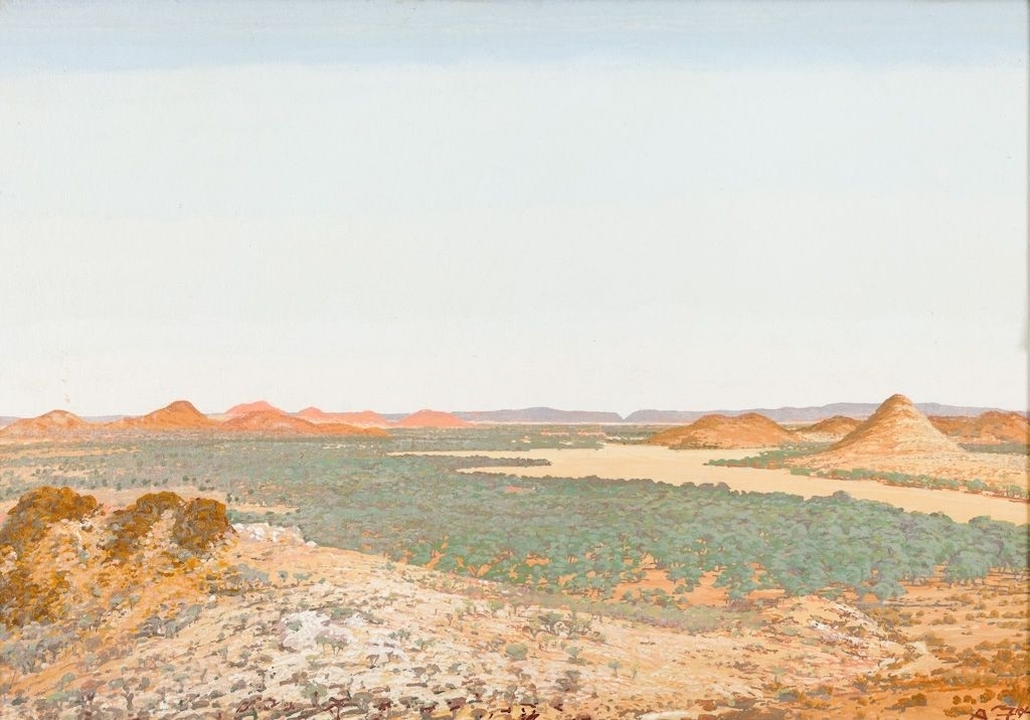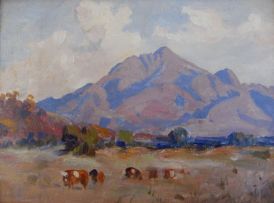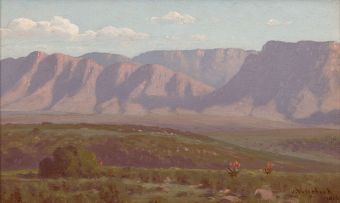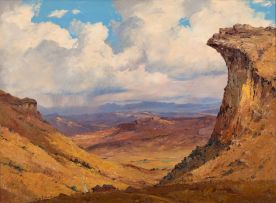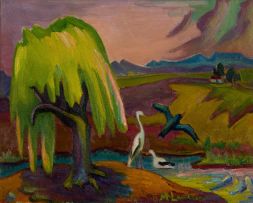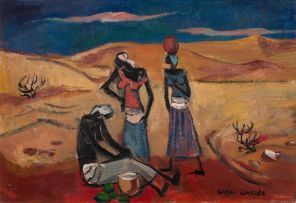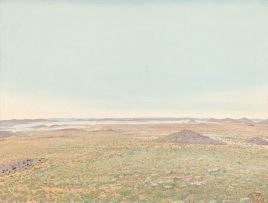Schaf River mit Tigerrforte
Adolph Jentsch
Incl. Buyer's Premium & VAT
About this Item
signed with the artist's initials and dated 1940; signed, dated 1940, inscribed with the title and numbered 36 on the stretcher
Notes
"Much that I see in nature seems immaterial to my painting. I just leave out what doesn't move me, or mean anything to me. I look and select. I don't paint anything unimportant by painting it with less attention, or putting it into the background. I just leave it out. The emptiness that comes into being like that is significant. The expression of emptiness becomes effective through those things that surround it."1 Adolph Jentsch
Born and educated in Dresden, Germany, Adolph Jentsch arrived at the farm of his wife's cousin, Helmuth Dietterle, in Namibia in February 1938. The vast open spaces, dramatic colours and textures of the local landscape resonated immediately with Jentsch. Imbued with an energy stemming from the landscape surrounding him, Jentsch began to paint and later that same year held the first of his solo exhibitions at the Grossherzog Hotel in Windhoek. Following this exhibition, he travelled around the southern parts of Namibia.
In Schaf River Mit Tigerrforte, painted in 1940, Jentsch has pared the Namibian vista down to a densely worked calligraphic pattern of brushstrokes in the foreground bleeding out into a limitless blue sky . "His style demanded enormous concentration because he seldom altered or obliterated a stroke," explains Esmé Berman.2 More importantly, "Jentsch has distilled the essence rather than portrayed the features of the South West African landscape and is therefore regarded as the first significant interpreter of the region". 3
Regarded as a spiritual painter with mystical inclinations, Jentsch wrote of his art: "I pour my deepest feelings into my art. One can always sense sincerity, whether it be in art or prayer. A stuttered truth is still a truth." 4
Despite exhibiting extensively, Jentsch was reticent to part with his work. Those collectors lucky enough to have been able to purchase work from exhibitions or Jentsch directly often became lifelong friends. Jentsch kept his accumulated paintings in a private gallery housed in a barn on the farm of close friends, the Von Funkes. Tragedy struck in 1975, two years before his death, when a fire decimated the barn, destroying almost forty years' worth of his output, the majority of which were oil paintings.
1 Levinson, Olga, Adolph Jentsch, Human & Rousseau Publishers (Pty) Ltd., Cape Town, 1973, page 68.
2 Berman, Esmé, The Story of South African Painting, A.A. Balkema, Cape Town, 1975, page 106.
3 Ibid.
4 Levinson, Olga, Adolph Jentsch, Human & Rousseau Publishers (Pty) Ltd., Cape Town, 1973, page 58.
Provenance
Mr Oscar Tuckmantle, proprietor of the Grossherzog Hotel, Windhoek.
